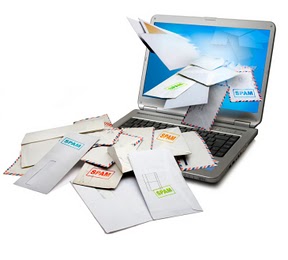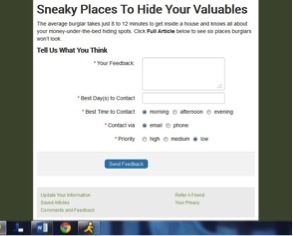You are viewing our site as an Agent, Switch Your View:
Agent | Broker Reset Filters to Default Back to ListAre You a Spammer and Don’t Realize It?
April 15 2014
 When someone mentions email spammers, do you picture sleazy con artists selling Viagra, get-rich-quick schemes and match-making services?
When someone mentions email spammers, do you picture sleazy con artists selling Viagra, get-rich-quick schemes and match-making services?
You certainly don't picture yourself, do you? But if you're not careful about the marketing emails you send out, you could end up being labeled a spammer.
All it takes to be pegged as a spammer is a single person who responds to your marketing newsletter by clicking the "spam" button in their email menu.
At best, a "spam" click dumps all future emails from you into the person's trash can. At worst, you collect enough spam reports to inspire an Internet Service Provider (think Yahoo, Gmail or Comcast) to block emails from you to their customers.
To avoid picking up a reputation as a spammer, follow these five tips:
1. Make it easy to opt-out of your e-newsletter
Yes, you read that right. You want it to be just as easy to leave your email list as it is to click the "spam" button. If your clients aren't enjoying your e-newsletter, you need to find one they do like.
At HomeActions, we include an unsubscribe button at the end of every email. The unsubscribe button isn't just good marketing, it's also legally required by the federal CAN-SPAM law for most commercial emails.
2. Ask for feedback about everything
Letting clients rate your articles is like having a weekly focus group at no cost. We handle this by putting an "Article Feedback" button at the bottom of every article. It takes the viewer to a page that looks like this:

We get comments from every issue. The comments tell us what homeowners like and don't like about the articles we write. We also pay attention to articles we hear nothing about – that tells us homeowners aren't interested in a topic.
If adding a comment-collection link is beyond your technical ability, perhaps you can add a "rate this article" button that opens an email addressed to you.
3. Make sure people realize the email is coming from you
Don't tinker with your format, banner/masthead or change your email address unless you have absolutely no choice but to do so. No matter how many times you warn your contacts about the move, someone will fail to recognize your new address and start reaching for the spam button.
CAN-SPAM says you have to put your physical address in the emails. Go beyond and use a big marketing head shot photo, recognizable logo and a familiar masthead/banner. They all clue your contacts into the fact that this e-newsletter is coming from you.
4. Partner with an email marketing firm that knows what it's doing
Choosing an inept partner to deliver your email can land your newsletter in the spam bucket. Experienced e-marketing and e-newsletter firms have established relationships with Internet Service Providers. They know how to CYA when someone reports your newsletter as spam.
If you're a do-it-yourself e-newsletter person, respond promptly to any spam reports you're sent.
5. Send really great articles with information people can use
A lot of agents think they should be sending their clients information about selling and buying homes. I disagree (unless you have your email list segmented to send buying tips to buyers and selling tips to sellers).
Most agents have only a single email marketing list. And 90 percent of the people on it aren't currently doing a real estate transaction. What they are doing is living in the home you sold them.
Focus on what interests them -- enjoying their home and maximizing its value – and you'll be welcomed in their email box instead of tossed into the spam folder.
Barry J. Friedman, CPA, CEO of HomeActions, creates communication platforms that keep Realtors® connected with their clients throughout the homeownership lifecycle. A thought leader in effective and efficient real estate marketing strategies, lead generation and data analysis, his bimonthly Realtor-to-consumer e-newsletters reach more than a million homeowners.









